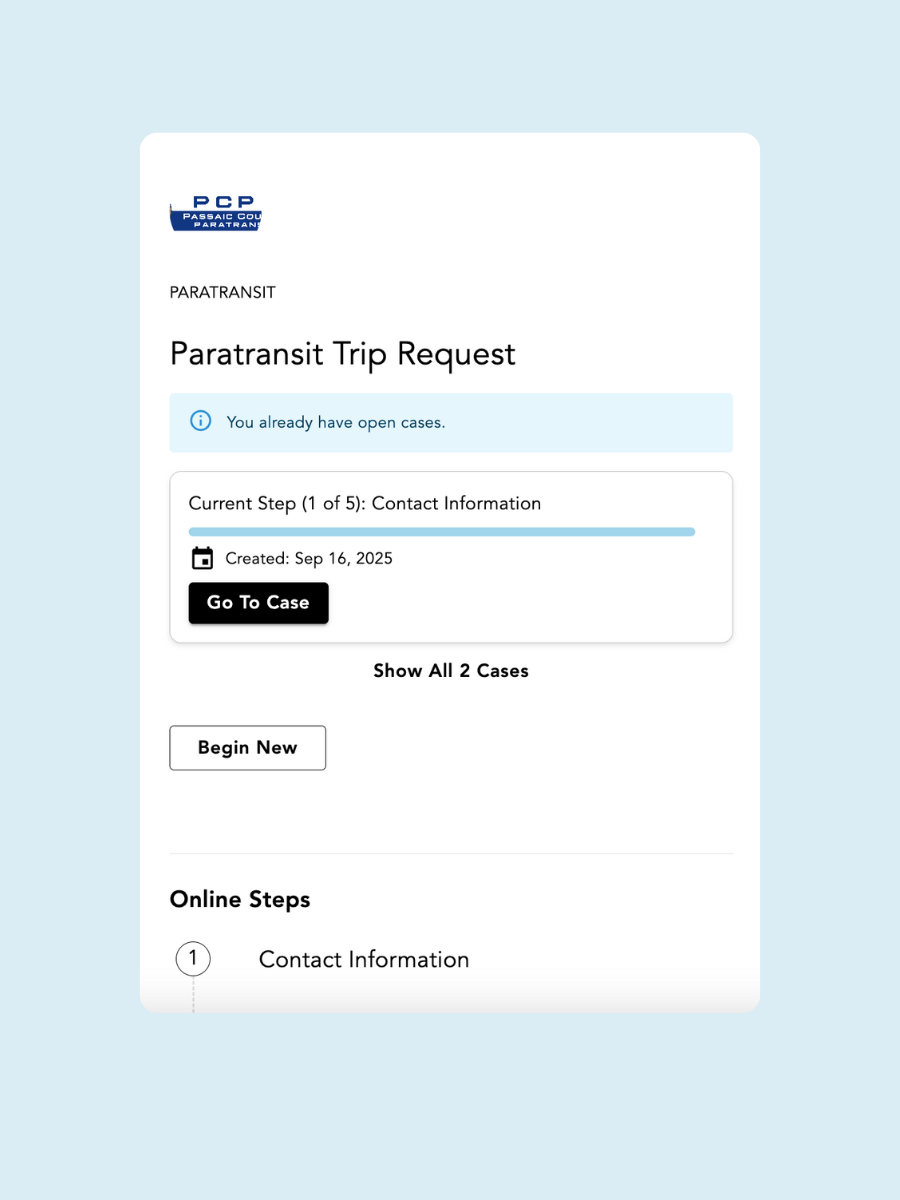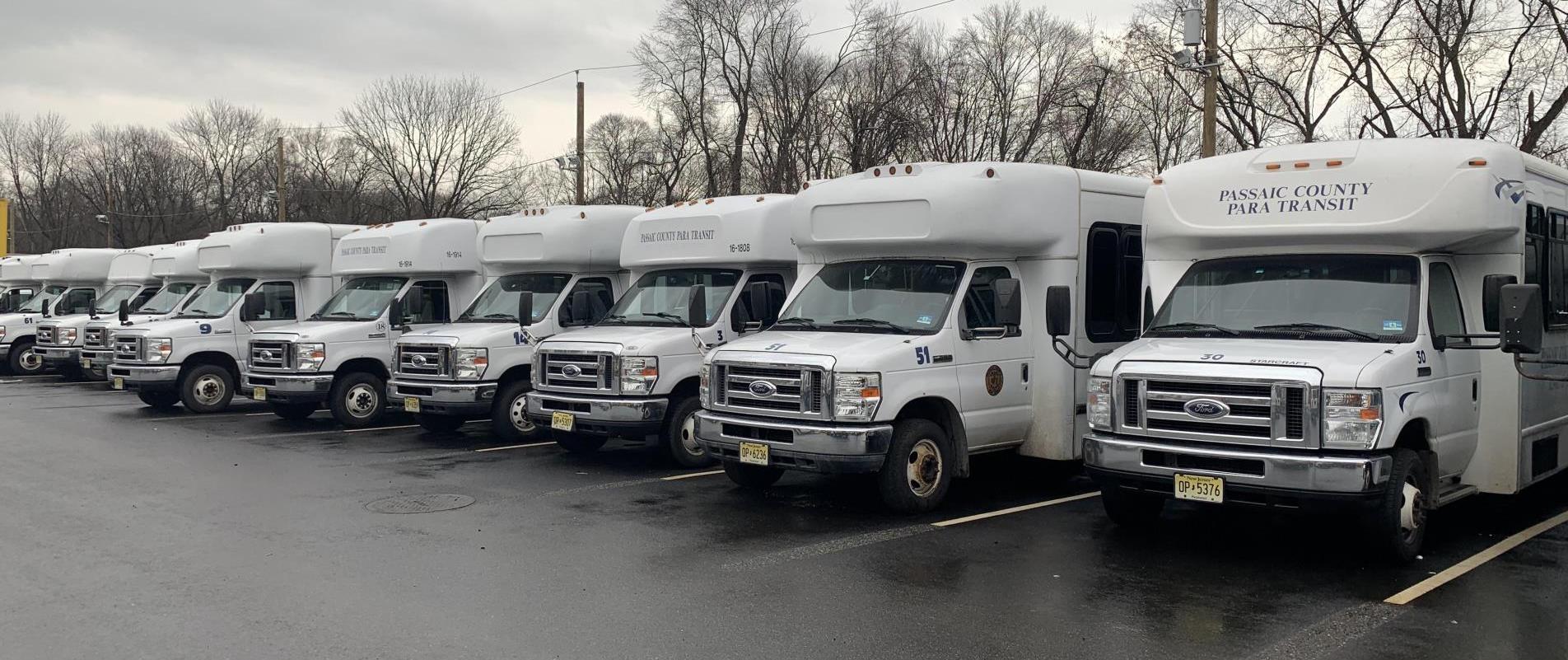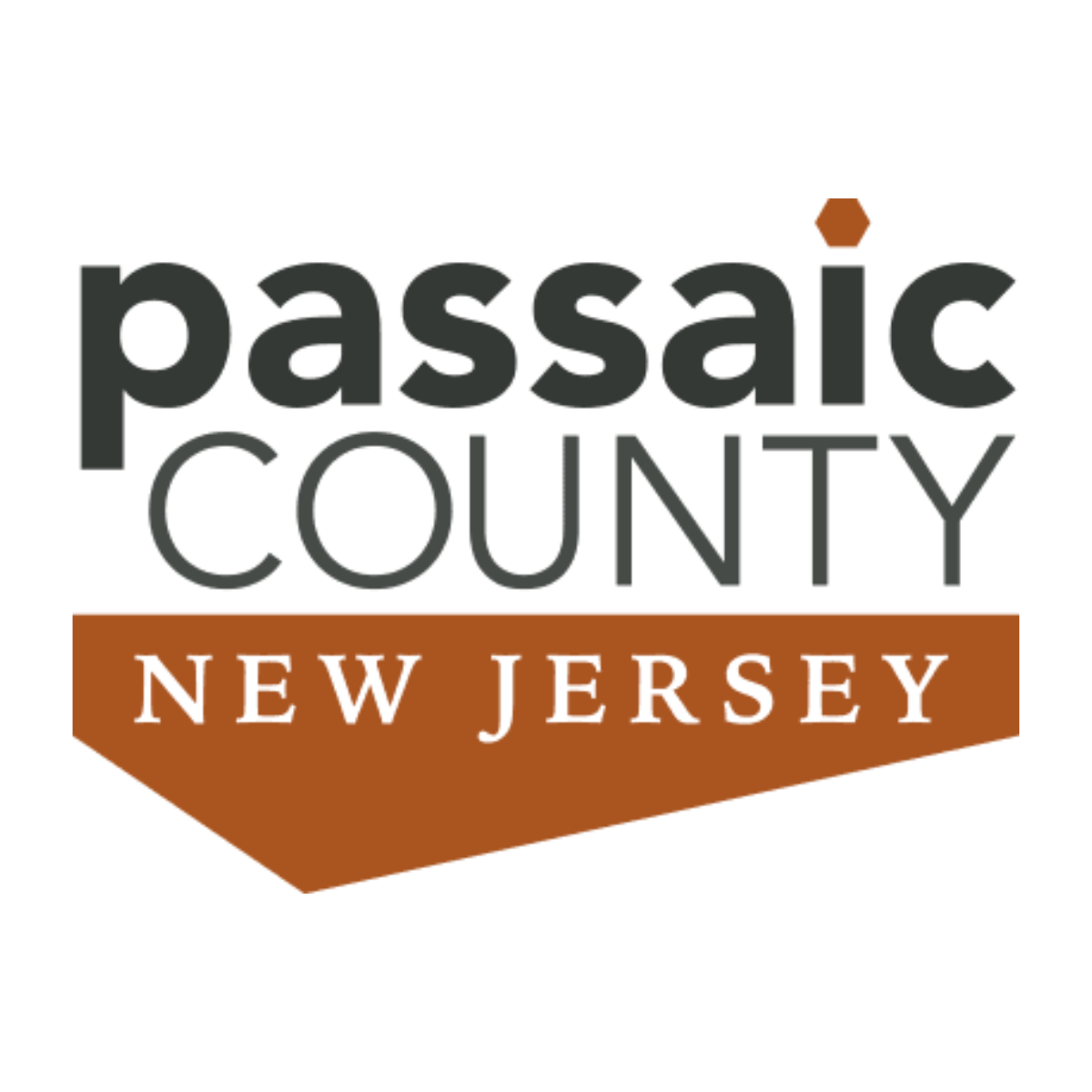customer
Paratransit, Passaic County, NJ
population
526,000
System replaced
Paper, Fax

Workflows, AI Chat, CRM
From Faxes to the Future: How AI Is Keeping Passaic County’s Residents Connected to Vital Care through Paratransit
For many in Passaic County, Paratransit isn’t a luxury. It’s the only way to get to the doctor, the dialysis center, or the community nutrition site.
With rising demand and limited resources, Director of Paratransit Ahmet Akdag is leading the charge to modernize operations using AI, digital forms, and streamlined workflows.
Public transportation can be the difference between independence and isolation. In Passaic County, that’s especially true for seniors, veterans, and people with disabilities who rely on Paratransit to access essential services.
“The options are very limited for them,” says Ahmet Akdag, Paratransit Division Director. “If they couldn’t use our service, many wouldn’t have any other way to get where they need to go.”
Ahmet leads with heart and hustle, personally coordinating with nonprofits, clinics, and other organizations when extra support is needed. “We’re not just a transportation provider. We’re a resource hub. Even if we can’t provide the solution directly, we’ll help find one.”
Passaic County Paratransit receives support from the Board of County Commissioners, ensuring the service remains fare-free and can develop innovative approaches to meeting the needs of our residents, and also receives grant funding from the NJ Senior Citizens and Disabled Residents Transportation Assistance Program, managed by NJ Transit, to assist in day-to-day operations.
But with ridership higher than ever and operations still tethered to paper forms and fax machines, Ahmet needed a way to help more residents.
Challenge
Manual Processes, Growing Demand
Passaic County’s Paratransit service supports an average of 200 rides per day, and that number is growing. “We're seeing an uptick in demand,” Ahmet says. “We’re averaging 15 trips per driver now, and we expect to hit 200+ trips per day once we're fully staffed.”
Historically, riders, or their case workers or family, have needed to manually call or fax in to request a ride. Often, there are a few phone calls back and forth to confirm the appointment.
At the same time, manual processes created unnecessary strain:
- Faxed ride requests for subscription trip requests from clinics and sites
- Manual appointment negotiation when times or locations didn’t meet eligibility requirements
- Frequent back-and-forth phone calls due to incomplete information
“Each phone intake could take five minutes, but if an appointment didn’t qualify or needed to be rescheduled, that could stretch into multiple calls,” Ahmet explains.
Serve More Riders While Simplifying Coordination
Staffing was tight. Processes were manual. But Ahmet saw an opportunity.
With support from the County, he partnered with Polimorphic to digitize operations, starting with online ride request forms, group ride request forms, and Title VI complaint forms. With the online forms, it is easier for riders to get an available date and time right away, almost eliminating the phone tag between rider and staff.
“We wanted to reduce the back-and-forth,” he says. “If we can give people a way to self-correct before it even reaches our office, we save time and improve the experience.”
Solution
Smart Forms + AI = Time Saved and Riders Served
Polimorphic helped Ahmet and his team implement several high-impact tools:
- Digital ride request forms that can be submitted by riders, family members, or care providers
- Multilingual AI search on Passaic County’s website to help residents find answers in Spanish and beyond
- Group scheduling features for senior group trips
Implementation was a “relatively smooth process.” Ahmet says, “Getting the AI Search up and running was pretty easy, while the forms involved understanding how to set them up. Once we got familiarized, it was rather intuitive when it came to formulating and creating new forms on the portal. Support, when needed, was also prompt and insightful, which helped quickly address any challenges or issues that came up.”
Paratransit has already felt the impact—even before a formal rollout:
“We’ve already saved a couple of hours a day, just from the forms,” Ahmet says. “And we haven’t even done the full public promotion yet.”
By automating routine intake, staff can focus on what really matters: confirmations, coordination, and exceptional service.
The Results: Greater Access, Reduced Bottlenecks
- ⏱️ Average of 2 hours saved each day, and counting
- 📈 Noticeable increase in ride requests from clinics, family members, and organizations
- 🌐 Expanded access for residents who don’t speak English or can’t call during work hours
- 📉 Fewer faxes, fewer calls, and fewer scheduling errors
“People love the convenience. Especially family members or caseworkers filling out forms on someone’s behalf. They don’t have to worry about finding time to call a government office.”
And for Paratransit’s team? “Now, when the request hits our desk, it’s already halfway done. That’s a big deal.”
Why It Matters: For Some Riders, There’s No Plan B
This isn’t just about efficiency. It’s about equity.
“We’ve had riders tell us: if Paratransit isn’t available, they just don’t go,” Ahmet says. “Uber’s too expensive. Friends or neighbors aren’t always available. And other nonprofit services are underfunded or gone.”
Ahmet and his team have even gone beyond the call of duty to help riders with physical or logistical barriers, coordinating directly with municipalities and veteran services to ensure everyone can get where they need to go.
What’s Next: Expansion, Outreach, and More Innovation
With new programs on the horizon, including rural shuttle services and reverse-commute workforce transit, Ahmet sees Polimorphic as a long-term partner.
“We’re planning to use internal forms for departments, subscription trip scheduling, and eliminate faxes altogether. I want to get to a point where the only place I see ‘fax’ is on our business cards.”
He’s also working with the County’s public information office to promote the new system widely, so even more residents can take advantage.
Final Thoughts: A Model for Modern Public Service
Ahmet’s advice to other counties? Don’t wait.
“The more we digitize, the more time we have to focus on what matters—helping people. That’s the whole point.”
We’ve already saved a couple of hours a day, just from the forms. And we haven’t even done the full public promotion yet.

Ahmet Akdag
Results
2 Hours Saved Daily
Increase in Ridership
Improved Accessibility
Decrease in Manual Work






















.jpeg)

.jpeg)
.jpeg)




